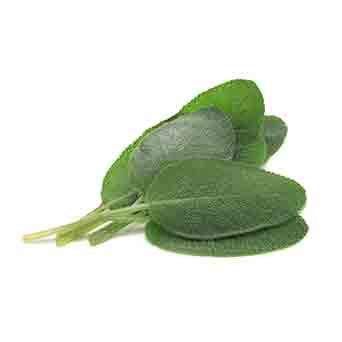Lobbens ES, Vissing KJ, Jorgensen L, van de Weert M, Jäger AK Journal of Ethnopharmacology, 2017 ABSTRACT: Ethnopharmacological relevance: Plants used in the traditional medicine of Europe to treat memory dysfunction and/or to enhance memory were investigated for activity against the underlying mechanisms of Alzheimer’s disease. Aim of the study: To investigate 35 ethanolic extracts… Read more »

- Botanical Name: Salvia officinalis
- Alternative Names: Dalmation Sage, Common Sage
- Botanical Family: Lamiaceae
- Primary Constituent: Beta-thujone
- Other Main Constituents: Camphor, 1,8-cineole
- Distillation Method: Steam Distillation
- Plant Part: Leaf
Preclinical development and clinical use of perillyl alcohol for chemoprevention and cancer therapy
Chen TC, Fonseca CO, Schönthal AH American Journal of Cancer Research, 2015 ABSTRACT: Perillyl alcohol (POH) is a naturally occurring dietary monoterpene isolated from the essential oils of lavender, peppermint, and other plants. Medical interest in this compound was generated by research findings showing that POH was able to inhibit the growth of tumor cells… Read more »
Essential oils and their constituents as anticancer agents: a mechanistic view
Gautam N, Mantha AK, Mittal S BioMed Research International, 2014 ABSTRACT: Exploring natural plant products as an option to find new chemical entities as anticancer agents is one of the fastest growing areas of research. Recently, in the last decade, essential oils (EOs) have been under study for their use in cancer therapy and the… Read more »
Genetic diversity and metabolic profile of Salvia officinalis populations: implications for advanced breeding strategies
Sarrou E, Ganopoulos I, Xanthopoulou A, Masuero D, Martens S, Madesis P, Mavromatis A, Chatzopoulou P Planta, 2017 ABSTRACT: MAIN CONCLUSION: As a result of this work, we were able to characterize seven indigenous to Greece Salvia officinalis populations using genetic and metabolomic tools. These tools can be used to select the most promising genotypes, capable to… Read more »
Genetic diversity and metabolic profile of Salvia officinalis populations: implications for advanced breeding strategies
Sarrou E, Ganopoulos I, Xanthopoulou A, Masuero D, Martens S, Madesis P, Mavromatis A, Chatzopoulou P Planta, 2017 ABSTRACT: MAIN CONCLUSION: As a result of this work, we were able to characterize seven indigenous to Greece Salvia officinalis populations using genetic and metabolomic tools. These tools can be used to select the most promising genotypes,… Read more »
Attenuated Total Reflectance-Fourier Transform Infrared Spectroscopy on Intact Dried Leaves of Sage (Salvia officinalis L.): Accelerated Chemotaxonomic Discrimination and Analysis of Essential Oil Composition
Gudi G, Krähmer A, Krüger H, Schulz H
Journal of Agricultural and Food Chemistry, 2015
Effects of selected plant essential oils on the growth and development of mouse preimplantation embryos in vivo
Domaracký M, Rehák P, Juhás S, Koppel J
Physiological Research/Academia Scientiarum Bohemoslovaca, 2007
A novel wound healing ointment: a formulation of Hypericum perforatum oil and sage and oregano essential oils based on traditional Turkish knowledge
Süntar I, Akkol EK, Keleş H, Oktem A, Başer KH, Yeşilada E
Journal of Ethnopharmacology, 2011
Epileptic seizures caused by accidental ingestion of sage (Salvia officinalis L.) oil in children: a rare, exceptional case or a threat to public health?
Lachenmeier DW, Walch SG
Pediatric neurology, 2012
Major selected monoterpenes a-pinene and 1,8-cineole found in Salvia lavandulifolia (Spanish sage) essential oil as regulators of cellular redox balance
Porres-Martínez M, González-Burgos E, Carretero ME, Gómez-Serranillos MP
Pharmaceutical Biology, 2014
